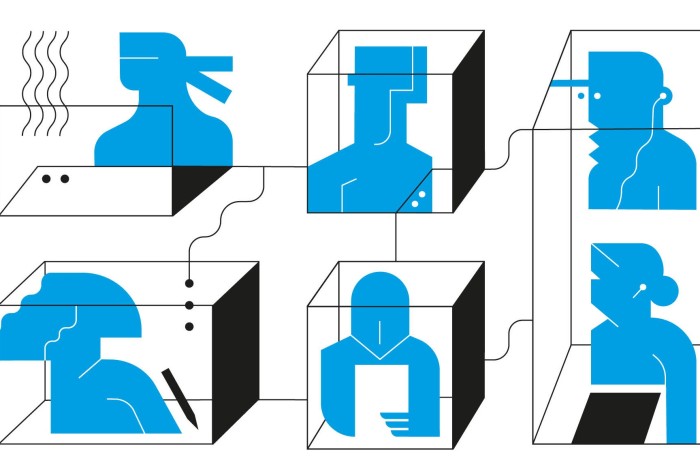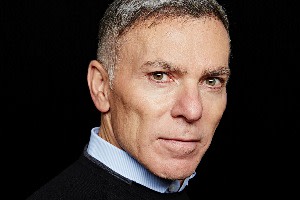Bold leadership is needed in complex times | Free to read

Roula Khalaf, Editor of the FT, selects her favourite stories in this weekly newsletter.
It seems clear that in a world with emerging stakeholder capitalism, environmental, social and corporate governance, and important social movements including Black Lives Matter and the #MeToo movement, leadership needs to have purpose and authenticity — a post-Covid-19 period is likely to accentuate this. We have learnt this in the evolution of our own organisation, Discovery, a global insurer that we built around the simple idea of “make people healthier”.
But how to lead in complex times is a vexing question, and there is no algorithm. There are, however, crucial underlying dynamics that cannot be ignored. Central to this is increasing interconnectivity: the organisations that we lead are far more interconnected due to technology and globalisation, with Covid-19 now cause and proof of this. This interconnectivity creates non-linearity that has profound and counterintuitive implications for effective leadership. Allow me to share two.
First, leading a modern organisation requires boldness not incrementalism; doing the big things really well; and simultaneously pursuing prudence and innovation.
Let me explain why. It is a cognitive error to think that outcomes in a system are distributed in a Gaussian or “bell-shaped” way. When systems are complex and interconnected, Pareto distributions emerge, where a small number of variables in the “tail” cause a skewed impact on outputs, otherwise known as the Pareto principle, or “80/20 rule”. The only outcomes that are distributed in a bell-shaped way are natural and independent phenomena, such as people’s heights or IQs.
When things are interconnected, almost invariably the skewness of Pareto emerges. On Twitter, 80 per cent of US tweets are generated by just 10 per cent of users; 1 per cent of the world’s population accounts for 45 per cent of global wealth; and our own data follows the general trend in healthcare where a small proportion of claimants — 20 per cent — account for the majority — 80 per cent — of claims’ costs. It is everywhere you look — from the frequency with which words are cited, to price movements on exchanges.
If you accept this, you must also believe this applies in a complex, interconnected organisation. A leader’s decisions and actions, especially a few important ones “in the tail”, have outcomes that have a dramatic effect, shifting and shaping an organisation.
This is a call for boldness rather than incrementalism. Leaders should focus on “tail” decisions and actions, and let others focus on incrementalism in the “rump”. It amplifies the need to implement vital initiatives excellently and crucially, it demands a simultaneous focus on prudence and innovation. In a Pareto world, one imprudent decision in the tail can collapse an organisation, and one significant innovation can be cause a paradigm shift.
We learnt this in our own business, having an epiphany around changing behaviour and linking it to the price of insurance. This has led to a new financial services category covering 20m people and a network of the largest insurers in 24 markets.
Rebooting the workplace

Prominent thinkers, policymakers and workplace experts examine the biggest questions of the post-pandemic moment — what will the future of work look like and how do we build it?
It’s time to end the male monopoly in international trade
This is our big chance to create better workplaces
A radical prescription to make work fit for the future
Leaders must commit to change if diversity is to work
Bold leadership is needed in complex times
October 12: How do we make offices work for people?
October 19: Do we need workplaces?
Second, leading complex and interconnected systems requires positivity and doing so is an exercise in sophistication, not naivety.
There is a reason for this. Humans evolved on the savannahs 2m-6m years ago, in extremely challenging conditions. Life expectancy was about 30 years and infant mortality was high. The threats faced were physical, and survival was predicated on seeking out negative signals as a proxy for imminent danger — becoming a deeply coded human attribute.
The problem is that we are now miscoded. The agricultural revolution occurred just 12,000 years ago and the industrial revolution about 200 years ago. As a result, the threats we face today are not physical but systemic ones — the failure of interconnected systems: states, education, health, as well as corporate.
To make interconnected systems effective requires the opposite of negativity. They are best served by trust, co-operation and collaboration, and this is created by seeking positive signals as well. As a case in point, Yuval Noah Harari, historian, philosopher and bestselling author, makes the point that to defeat Covid-19, people need to trust scientific experts and public authorities, and countries need to trust each other.
Organisations are no different. To make companies effective requires affirming frameworks — having a unifying purpose, setting a vision and goals, and creating positive feedback loops. A post-Covid-19 world with potentially atomised workforces will amplify this need. The issue is that humans are coded to seek negative signals. But in an interconnected world, we are best served by seeking positive ones as well. Negative signal-seeking often seems responsible, conservative and realistic — while positive signal-seeking seems naive and reckless. Yet in an interconnected world, the opposite is true. Bypassing cynicism and seeking out the positive is the truly sophisticated response.

A post-Covid-19 world will require leadership that is purpose-driven and authentic. But to make this effective requires being bold, not incremental, and positive, not negative. These may sound like soft leadership tactics, but both are deeply rooted in rational logic.
Adrian Gore is founder and chief executive of Discovery, a global insurer founded in South Africa in 1992. It has more than 20m members worldwide

Comments